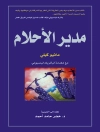This book describes how the implementation of variable rate launching in the context of a mixed-model assembly line with unlimited customization flexibility promotes customer-centric production.
Variable rate launching (VRL) – as opposed to fixed rate launching (FRL) – eliminates idle time and utility work in mixed-model assembly lines. Even in the context of limitless customization, which runs the risk of concentrated peak workloads and possible longer assembly lines, a variable takt proves to be more economical than a fixed takt. On the technical side, a fixed takt requires both a healthy balance of process times and optimal scheduling to create feasible production schedules, as using average takt does not allow workers enough time to complete their tasks for more complex products. Because the variable takt relies on similar process times for a given product across the entire line for one product, and all products are given exactly the time they need for assembly, optimalseries-sequencing and regular task rescheduling can be eliminated.
This book is intended as a reference guide for experienced executives in manufacturing and academics teaching operational effectiveness for customer-centric production, and makes extensive references to AGCO Fendt’s modern tractor line in Marktoberdorf, Germany. The book also offers application case studies from companies in related industries such as automotive, electronics, and machine tools. The book’s key message is that variation should not be universally eliminated from manufacturing. As such, the book represents a counterpoint to the philosophy advocated by the Toyota Production System.
Mục lục
Chapter 1. Introduction.- Chapter 2. Basics on takt and flow – derivations from practice.- Chapter 3. Heijunka – fast as a tortoise.- Chapter 4. Variable Takt.- Chapter 5. Takt time groups at variable takt.- Chapter 6. Design-for-Tact and the ideal flow assembly.- Chapter 7. Mastering variance in assemblies – The Fendt assembly system and matrix assembly.- Chapter 8. Advanced concepts in automotive manufacturing to master variance in assemblies.- Chapter 9. Summary and outlook.
Giới thiệu về tác giả
Peter Bebersdorf first gained experience in the mixed-model assembly of highly customized busses and in the application of the lean philosophy through various management positions at Daimler Buses. At AGCO, he is Director Manufacturing of Fendt’s tractor production and developed the Vario Takt, one of the most successful applications of variable takt in combination with classic lean methods. The Fendt factory has been acknowledged by the World Economic Forum and Mc Kinsey & Company as digital lighthouse factory for its ability to produce 10 models on a single assembly line. Peter is a graduate engineer (BA) in electrical engineering, holds an MBA and is completing his doctoral thesis at WHU – Otto Beisheim School of Management.
Arnd Huchzermeier is Chaired Professor in Production Management at WHU – Otto Beisheim School of Management, Vallendar, Germany. Arnd taught at the Booth Graduate School of Business of the University of Chicago after earning his Ph D from The Wharton School of the University of Pennsylvania. He is, among others, author of books on Industrial Excellence, Management Quality, Bottom-up Strategy Innovation, Supply Chain Finance and Blockchain/DLT. He regularly publishes in leading managerial and academic journals. In 1996, he co-founded with colleagues from INSEAD the Industrial Excellence Award which is presently supported by 15 Top Business Schools in 12 European countries.












